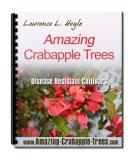DESIGNING AND BUILDING A POND
Building a pond is a big undertaking that involves a fair amount of hard work and, as it will be a permanent feature of your garden, it is worthwhile spending some time in the planning stage. So before you rush into the garden with a shovel, pause for a while and think about your fish pond design and the type of pond that you want…
Natural Pond – follows the curves and forms of nature and may include an outcrop of stone or a natural beach. This will often allow planting at the edge of the pool and can create the impression that the pond was there long before the rest of the garden or the house was constructed.
Formal Pond – a geometric design works best when there is a relationship in design and materials with the buildings that are close by. It will usually be symmetrical in design and could be rectangular or square in shape and may have a paved edge. Formal ponds are often planted but usually with artfully chosen plants rather than the wilder plantings of a natural pond.
Raised Pond – a formal pond
can also be constructed above ground from bricks, blocks or stone. There
will be less waste to carry from the site, however the cost of the
construction materials will be higher than an in-ground pond. Once you’ve
decided on the type of pond spend some time working out possible locations
and mark out the locations with a garden hose or a length or rope. Take into
consideration the amount of light in different locations. If you want to
grow water lilies you will require four or six hours of direct sunlight on
the pond during the day.
Shade is fine for fish-only
ponds. Check the overhanging trees as these could also be a source of
pond pollution. If you must build a pond under a tree at least try to avoid
deciduous trees – the leaves will create a lot of pond waste. When deciding
the location of your pond avoid the temptation to locate the pond in the
lowest point in the garden. The low point can carry fertilizers and organic
debris into the pond. A pond for goldfish or aquatic plants need prevent the
pond freezing in winter. If you want to keep koi in your pond it will need
to be at least three feet deep or more.
The biggest mistake that
water gardeners tend to make is to build a pond that is too small. Your
finished pond will appear much smaller than your original layout! If your
pond is to be dug out rather than raised consider how you will remove the
excavated material. It may be possible to use it in another part of the
garden, alternatively you may need to have it removed which can be difficult
and expensive.
Assuming you are going to build a sunken pond the next step is to start
digging! Dig the pond to the desired shape and dig a shelf around the
perimeter of the pond about one foot deep and one or more feet wide. Dig the
remainder of the pond. If you are planning a waterfall dig the pond with a
slight slope away from the waterfall. Line the excavated pond with underlay.
This is to stop the flexible liner from being pierced by sharp stones.
Pond underlay can be made from geo-textile or old carpet, providing
it is non-organic and non-rotting this can be used to save money. A butyl
rubber pond liner is laid on top of the underlay. Position the liner evenly
in the pond and try to minimize the folds and wrinkles. Leave an
overhang of at least six inches. Avoid walking on the newly laid liner as
much as possible. If you must walk on it wear socks! Fill the pond and try
to ease the wrinkles out of the liner while the pond is filling.
Arrange coping stones around the edge of the pond and fold the liner
up behind the stones ensuring the edge of the liner is above the water
level. A more natural edge can be created by planting shallow-water plants
around the edge of the pond. You may need to consider cementing the coping
stones in place if the pond edge will be subjected to much foot traffic.
Now sit back and enjoy your new garden pond!
Have A Great Story About This Topic?
Do you have a great story about this? Share it!
Order Your New Landscape Design Today!
Always Design Before You Plant!
Click Above To Get Started Now!

Privacy Disclaimer About Contact This Site Built: Solo Build It
Copyright © 2003 - 2023 by Web-Landscape-Design-Ideas.com.
All rights reserved.


